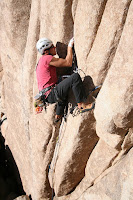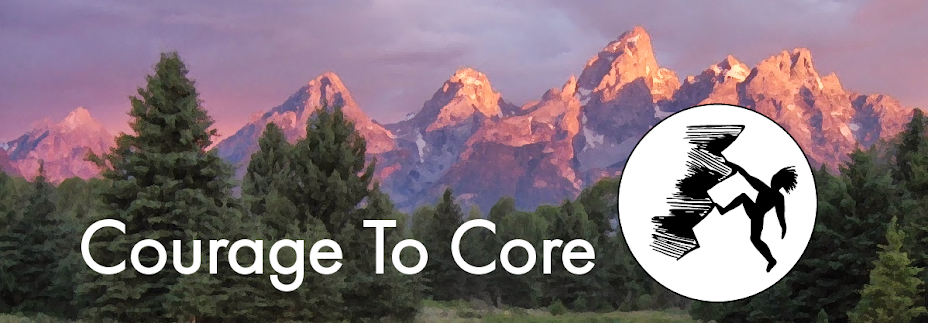 |
| Climbing in Joshua Tree |
How do we bridge the gap between the abstraction of mathematics and the reality of the world it quantifies? We can’t always take a field trip, but we can challenge students to do small experiments, measuring and calculating in the context of some real-world problem. In this way mathematics becomes a tool for understanding something about the world, not only an abstraction. Don’t get me wrong, the formal abstractions of mathematics are awe-inspiring. But my students in southern California needed some help connecting their understanding of geology in the classroom with the actual world in their midst. And students come to our math classes yearning for the numbers to become real in some way.
The best way to get a student interested in rock climbing is not to climb with them. It’s to go on a scramble, a hike through uneven terrain, involving some boulder hopping and creative wiggling. Eventually a kid will want to go higher, and I tell them, “Ok, let’s get a rope!” In the same way, I love seeing students creatively engage with problems at the limits of what they know until finally they are asking for a tool to solve a problem, or even developing one. Building anchors and tying into ropes for its own sake is pretty boring, but when you really want to climb something it’s brilliant.
Courage To Core represents my fifteen year effort to develop materials that give students a certain amount of autonomy to grapple with real world problems and build the tools to solve them. I’m so glad that Teachers Pay Teachers has given me the chance to share these materials with you. My most recent resource is linked below—I hope you and your students enjoy its narrative and experimental nature, and that together we can bridge the gap between the abstract and the granite.

The way our school structure is organized makes it challenging for our learners to connect real life to the abstract and, for teachers to create such experiences. Thank you for understanding that many of our children have difficulties with the abstract and require inquiry and exploration in order to properly learn mathematical concepts.
ReplyDeleteAs I look around today I see more teachers and schools striving to bring more of the world into the classroom, and more of the classroom into the world, and give students a structure for creative engagement with that world. Exciting times! Thanks for your comments!
DeleteThe large class public system makes it so much easier to push concepts than teach the why. If you can sneak those real world application moments in, it makes such a difference in a student's understanding and motivation. It sounds like you're doing a good job of both.
ReplyDeleteIt is amazing to see how teachers are challenged these days with huge class sizes, limited time and space, and few prep periods. It's so hard to build space and structure for engagement and experimentation with the real-world and models of it. And yet, the tools for engagement are getting easier to find and use. Hopefully teachers can be given the time, the class sizes and the resources to allow for more real-world engagement. Thanks for your comment!
Delete